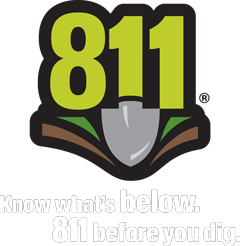Natural Gas Safety and Science
New York| Subject | Grade Levels | Broad Standard Reference | Specific Standard Code | Specific Standard Name | Specific Wording of Standard |
|---|---|---|---|---|---|
| NGSS | 4 | Earth and Space Sciences | 4-ESS1-1 | Earth's Place in the Universe | Identify evidence from patterns in rock formations and fossils in rock layers to support an explanation for changes in a landscape over time. |
| NGSS | 4 | Earth and Space Sciences | ESS3.A | Natural Resources | Energy and fuels that humans use are derived from natural sources, and their use affects the environment in multiple ways. Some resources are renewable over time, and others are not |
| NGSS | 4 | Earth and Space Sciences | 4-ESS3-1 | Earth and Human Activity | Obtain and combine information to describe that energy and fuels are derived from natural resources and their uses affect the environment. |
| NGSS | 5 | Physical Sciences | 5-PS1-1 | Matter and Its Interactions | Develop a model to describe that matter is made of particles too small to be seen. |
| NGSS | 5 | Physical Sciences | PS1.A | Structure and Properties of Matter | Matter of any type can be subdivided into particles that are too small to see, but even then the matter still exists and can be detected by other means. A model showing that gases are made from matter particles that are too small to see and are moving freely around in space can explain many observations, including the inflation and shape of a balloon and the effects of air on larger particles or objects. |
| NGSS | 5 | Physical Science | 5-PS1-3 | Structure and Properties of Matter | Make observations and measurements to identify materials based on their properties. |
| Health | K-12 | -- | Standard 2.1 | A Safe and Healthy Environment | Students will . . . recognize threats to the environment and offer appropriate strategies to minimize them. |
| Health | K-12 | -- | Standard 2.1 | Family and Consumer Sciences | Students will know the basic principles of home and community safety. |
| ELA | 4 | Reading | 4R1 | Key Ideas and Details | Locate and refer to relevant details and evidence when explaining what a text says explicitly/implicitly and make logical inferences. |
| ELA | 4 | Reading | 4R4 | Craft and Structure | Determine the meaning of words, phrases, figurative language, academic, and content-specific words. |
| ELA | 4 | Reading | 4R7 | Integration of Knowledge and Ideas | Identify information presented visually, orally, or quantitatively (e.g., in charts, graphs, diagrams, time lines, animations, illustrations), and explain how the information contributes to an understanding of the text. |
| ELA | 5 | Reading | 5R1 | Key Ideas and Details | Locate and refer to relevant details and evidence when explaining what a text says explicitly/implicitly and make logical inferences. |
| ELA | 5 | Reading | 5R5 | Craft and Structure | Determine the meaning of words, phrases, figurative language, academic, and content-specific words and analyze their effect on meaning, tone, or mood. |
| ELA | 5 | Reading | 5R7 | Integration of Knowledge and Ideas | Analyze how visual and multimedia elements contribute to meaning of literary and informational texts. |
| ELA | 6 | Reading | 6R2 | Key Ideas and Details | Determine a theme or central idea of a text and how it is developed by key supporting details over the course of a text; summarize a text |
| ELA | 6 | Reading | 6R4 | Craft and Structure | Determine the meaning of words and phrases as they are used in a text . . . |
